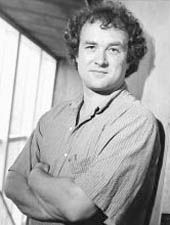Zhang, S. H., Liu, J. P., Kobayashi, R., Tonks, N. K. (June 1999) Identification of the cell cycle regulator VCP (p97/CDC48) as a substrate of the band 4.1-related protein-tyrosine phosphatase PTPH1. Journal of Biological Chemistry, 274 (25). pp. 17806-17812. ISSN 0021-9258
Abstract
The human band 4.1-related protein-tyrosine phosphatase PTPH1 was introduced into NIH3T3 cells under the control of a tetracycline-repressible promoter. Ectopic expression of wild type PTPH1 dramatically inhibited cell growth, whereas a catalytically impaired mutant showed no effect. To identify the direct target of PTPH1 in the cell, we generated a substrate-trapping mutant, in which an invariant aspartate residue was changed to alanine (D811A in PTPH1), The PTPH1-D811A mutant trapped primarily a 97-kDa tyrosine-phosphorylated protein, which was determined to be VCP (also named p97 or yeast CDC48), from various cell lysates in vitro. However, when expressed in mammalian cells, the D811A mutant was observed to contain high levels of phosphotyrosine and did not trap substrates. Mutation of tyrosine 676 to phenylalanine (Y676F) in the PTPH1-D811A mutant led to a marked reduction in phosphotyrosine content. Furthermore, this double mutant specifically trapped VCP in vivo and recognized the C-terminal tyrosinesof VCP, whose phosphorylation is important for cell cycle progression in yeast. Like wild type PTPH1, this double mutant also inhibited cell proliferation. Moreover, induction of wild type PTPH1 resulted in specific dephosphorylation of VCP without changing the overall phosphotyrosine profile of the cells, VCP has been implicated in control of a variety of membrane functions, including membrane fusions, and is a regulator of the cell cycle. Our results suggest that PTPH1 may exert its effects on cell growth through dephosphorylation of VCP, thus implicating tyrosine phosphorylation as an important regulator of VCP function.
| Item Type: | Paper |
|---|---|
| Uncontrolled Keywords: | BIOCHEMICAL-CHARACTERIZATION MAMMALIAN HOMOLOG PHOSPHORYLATION ASSOCIATION FUSION KINASE CDC48 |
| Subjects: | organs, tissues, organelles, cell types and functions > cell types and functions > cell functions > cell cycle organs, tissues, organelles, cell types and functions > cell types and functions > cell functions bioinformatics > genomics and proteomics > genetics & nucleic acid processing > protein structure, function, modification > protein types > enzymes bioinformatics > genomics and proteomics > genetics & nucleic acid processing > protein structure, function, modification > protein types > enzymes > protein tyrosine phosphatase |
| CSHL Authors: | |
| Communities: | CSHL labs > Kobayashi lab CSHL labs > Tonks lab |
| Depositing User: | Matt Covey |
| Date: | June 1999 |
| Date Deposited: | 18 Dec 2013 16:49 |
| Last Modified: | 18 Dec 2013 16:49 |
| Related URLs: | |
| URI: | https://repository.cshl.edu/id/eprint/29024 |
Actions (login required)
 |
Administrator's edit/view item |





